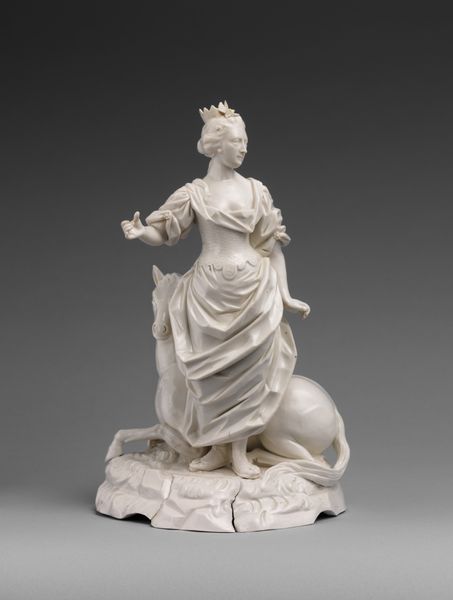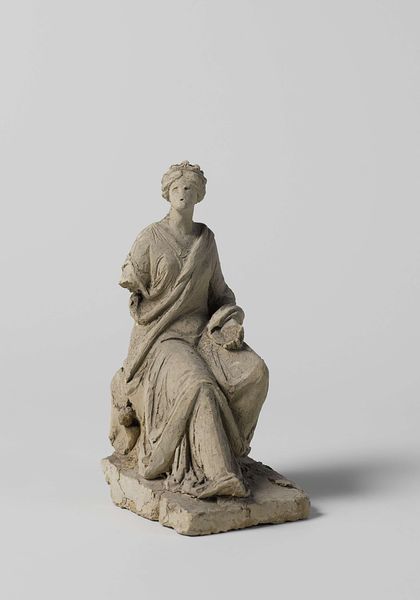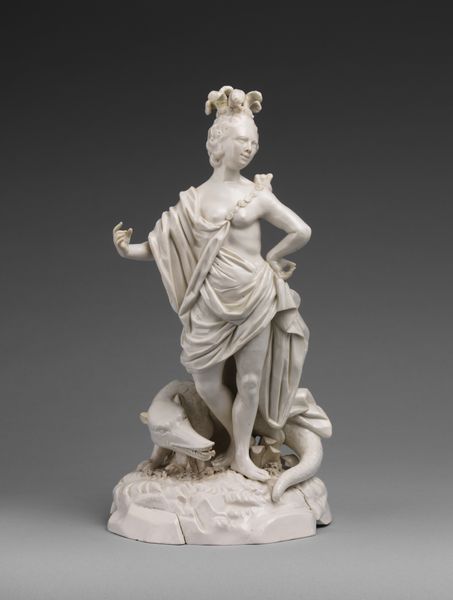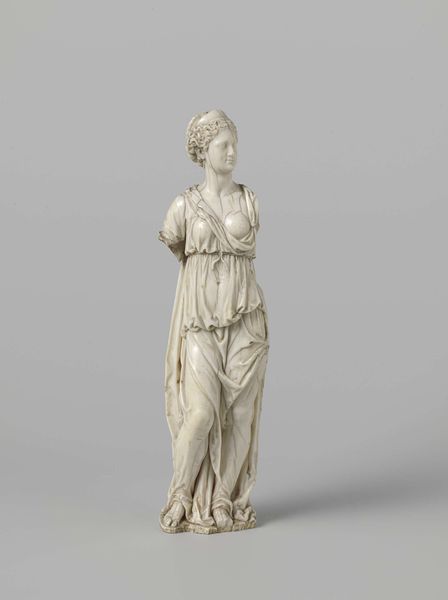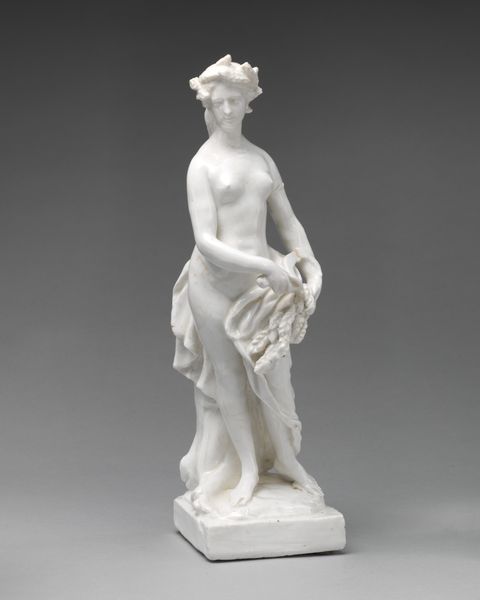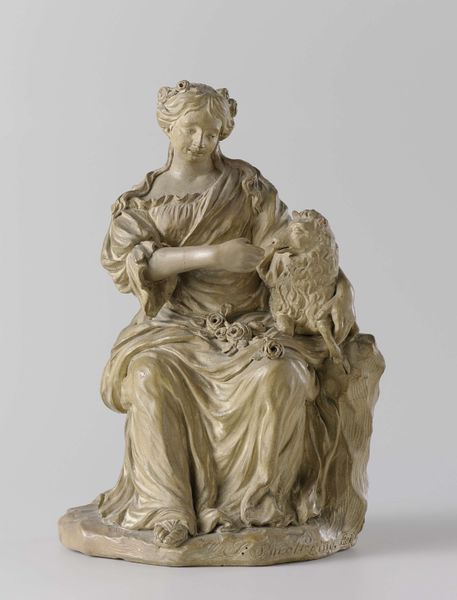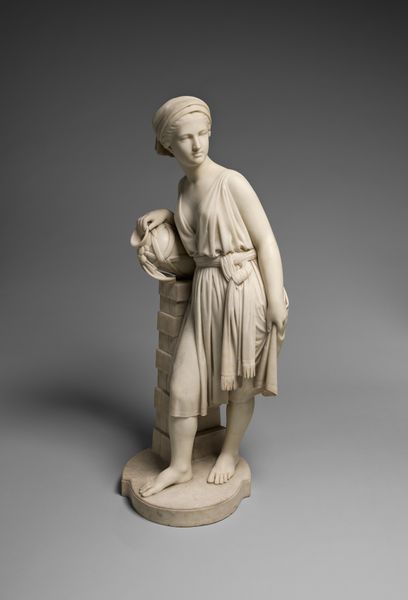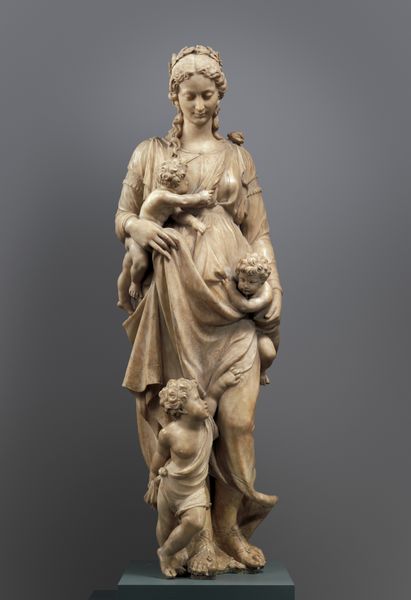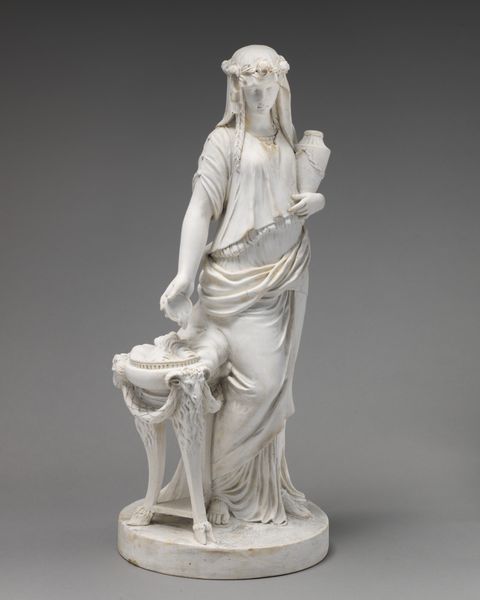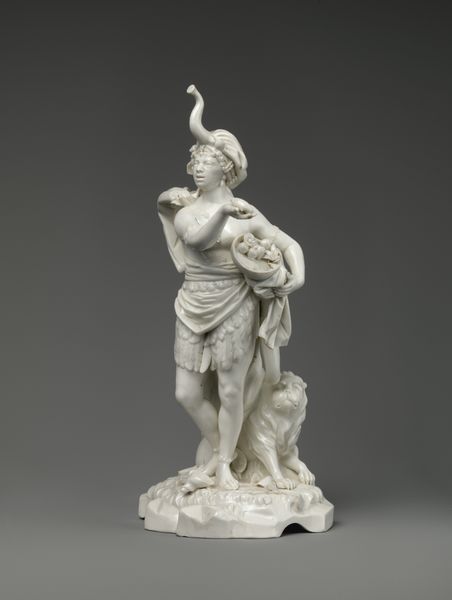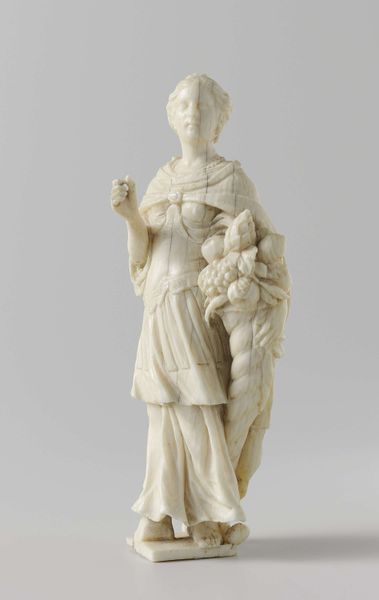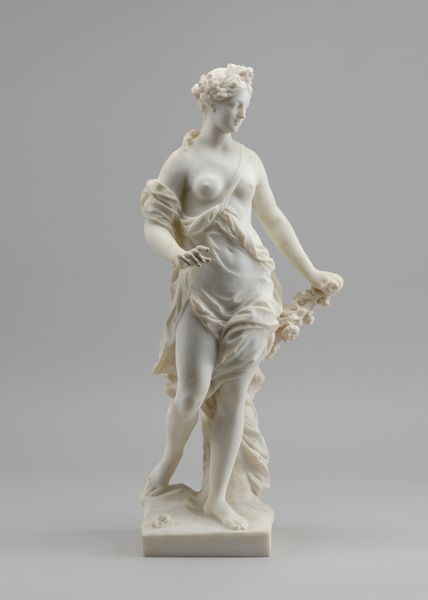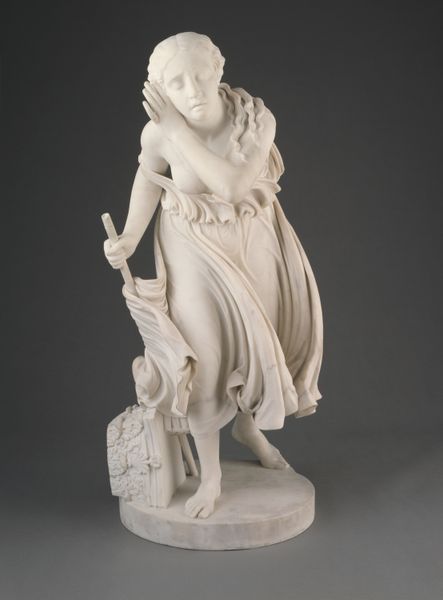
Asia, from Allegories of the Four Continents 1781 - 1788
0:00
0:00
Dimensions: Overall (confirmed): 8 9/16 x 5 x 3 3/4 in. (21.7 x 12.7 x 9.5 cm)
Copyright: Public Domain
Curator: At the Metropolitan Museum of Art, we find a piece titled "Asia, from Allegories of the Four Continents," crafted by the Fulda Pottery and Porcelain Manufactory between 1781 and 1788. It's porcelain. What strikes you first? Editor: Immediately, it's the stillness, almost a pristine quietness, in this all-white tableau. The porcelain, so smooth, lends an air of almost unreal calm to the allegorical scene. Curator: The allegory is crucial. During this period, these Continental allegories weren’t mere representations; they actively participated in a Western European narrative, reinforcing its self-image against a backdrop of its perceived "others." How do you read the symbolism here? Editor: The figure clearly represents Asia, but what does that representation actually *do*? We see the camel, of course, an immediately recognizable symbol. And that object she is holding: it's perhaps a censer, an item for burning incense. Curator: Exactly. These elements become loaded signifiers within the larger colonial project, reducing a vast, complex continent to a few easily digestible images. How does the social standing of the figure play into this? Editor: Well, consider the figure's attire, styled loosely like Greco-Roman drapery; that itself is a claim to certain kind of civilization. How does this relate to other imagery in the Met from that era? Are there parallel depictions of other continents, and how do they play into power relations of the day? Curator: Absolutely. Contextualizing “Asia” within the broader visual vocabulary of the period reveals how these objects buttressed European cultural and political dominance. I wonder about the artistic milieu that produced such figures. Who was its intended audience, and what political messages did this work reinforce? Editor: It's a chilling reminder how aesthetics can so easily serve power, even in the guise of something beautiful and "harmless," a decorative art, which as a type enjoys a different, complex placement in institutional art history than paintings and "fine art." Curator: It leaves you contemplating the complex relationship between art, representation, and the lasting echoes of colonial history, prompting questions about the ethics of display. Editor: Indeed. It underscores the ongoing importance of understanding not only what art depicts but also what its social life produces.
Comments
No comments
Be the first to comment and join the conversation on the ultimate creative platform.
